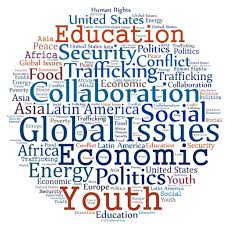Sustainable Urban Design: A Green Building Revolution

Updated at: 2025-05-12 12:35:13 (7 months ago by Melkisedeck Leon Shine)
The Green Building Revolution: Architecting Sustainable Urban Futures
The escalating global concern for environmental sustainability necessitates a paradigm shift in urban development. This necessitates a comprehensive understanding of key concepts: sustainable development, encompassing economic growth, social equity, and environmental protection; green building, integrating environmentally responsible and resource-efficient practices throughout a building's lifecycle; and urban resilience, a city's capacity to withstand and recover from various shocks and stresses. The green building revolution, therefore, is not merely a trend but a critical response to the challenges of rapid urbanization and climate change.
The projected increase in global urban populations to approximately 68% by 2050 underscores the urgency for sustainable urban solutions. This unprecedented urbanization exerts immense pressure on natural resources, exacerbates energy consumption, and contributes significantly to pollution. Green building offers a pathway towards mitigating these challenges, fostering environments that are both ecologically sound and socially beneficial. The following points elucidate the transformative potential of the green building movement, structured according to a framework of environmental, social, and economic sustainability.
Environmental Sustainability: Minimizing Ecological Footprint
- Energy Efficiency and Renewable Energy Integration: Employing passive design strategies (optimal building orientation, natural ventilation), high-performance building envelopes (insulation, glazing), and efficient HVAC systems minimizes energy demand. Simultaneously, integrating renewable energy sources, such as photovoltaic (solar) panels and wind turbines, reduces reliance on fossil fuels and lowers carbon emissions, aligning with principles of energy conservation and renewable energy deployment as outlined in various sustainability frameworks. This directly addresses climate change mitigation.
- Water Conservation and Resource Management: Implementing water-efficient fixtures, rainwater harvesting systems, and greywater recycling significantly reduces water consumption. This reflects a circular economy approach, minimizing environmental impact and resource depletion. The application of lifecycle assessment methodologies can further optimize water usage throughout a building's lifespan.
- Waste Minimization and Circular Economy Principles: Utilizing sustainable and recycled building materials, implementing robust waste management programs during construction and operation, and designing for deconstruction and material reuse promote a circular economy. This minimizes landfill waste and reduces the overall environmental burden, directly applying the principles of waste hierarchy (reduce, reuse, recycle).
- Enhanced Indoor Environmental Quality: Employing low-VOC (volatile organic compound) emitting materials and ensuring adequate ventilation contributes to superior indoor air quality, improving occupant health and productivity. This aligns with the WELL Building Standard and other frameworks promoting human well-being.
- Mitigation of Urban Heat Island Effect: Green roofs and walls, utilizing vegetation and permeable paving, effectively reduce the urban heat island effect, lowering energy demand for cooling and improving thermal comfort. This is a practical application of urban ecology principles.
- Biodiversity Preservation and Habitat Creation: Incorporating green spaces, rooftop gardens, and wildlife habitats within urban design promotes biodiversity, enhances ecological connectivity, and improves the overall quality of life. This aligns with ecological restoration and biodiversity conservation strategies.
- Climate Change Resilience: Designing buildings to withstand extreme weather events and incorporating adaptation measures enhances the resilience of urban environments to climate change impacts. This utilizes principles of disaster risk reduction and climate-resilient design.
Social Sustainability: Fostering Inclusive Communities
- Social Equity and Accessibility: Designing buildings that cater to the needs of all community members, including those with disabilities or limited resources, promotes social equity and inclusivity. This reflects principles of universal design and social justice.
- Community Engagement and Participation: Engaging local communities in the design and development process fosters a sense of ownership and strengthens social cohesion. This is a crucial aspect of participatory design and community-based development.
Economic Sustainability: Driving Innovation and Growth
- Economic Viability and Return on Investment: Green buildings often demonstrate higher occupancy rates, increased property values, and lower operational costs, resulting in a strong return on investment. This underscores the economic benefits of sustainable practices.
- Job Creation and Economic Development: The green building industry creates numerous jobs across various sectors, driving economic growth and innovation. This represents a significant opportunity for economic diversification and sustainable employment.
- Enhanced Global Competitiveness: Cities with a strong commitment to sustainable development attract investment, tourism, and skilled professionals, enhancing their global competitiveness and reputation. This aligns with principles of sustainable urban planning and economic competitiveness.
- International Collaboration and Knowledge Sharing: The green building movement necessitates global collaboration and knowledge exchange to accelerate its implementation and maximize its impact. This promotes the diffusion of best practices and technological advancements.
Conclusions and Recommendations
The green building revolution presents a unique opportunity to create sustainable, resilient, and equitable urban environments. A multi-faceted approach, integrating environmental, social, and economic considerations, is crucial for successful implementation. Further research should focus on developing standardized metrics for assessing the holistic sustainability performance of buildings, enhancing the accessibility and affordability of green building technologies, and fostering greater collaboration among stakeholders across sectors and geographical boundaries. Policy interventions promoting green building standards, incentives for sustainable development, and investment in green infrastructure are essential. The ultimate goal is to transition towards a global urban landscape characterized by minimal environmental impact, enhanced social well-being, and robust economic growth. Failure to embrace these principles jeopardizes the well-being of future generations and the long-term health of our planet.Reader Pool: What innovative strategies, beyond those discussed, could significantly accelerate the global adoption of green building practices?

